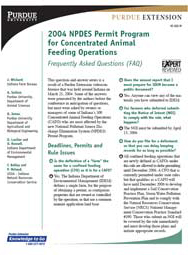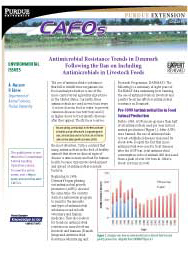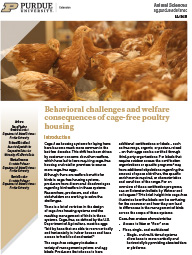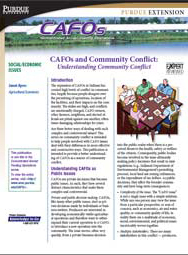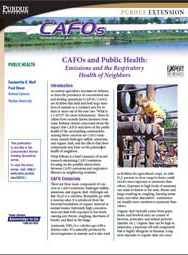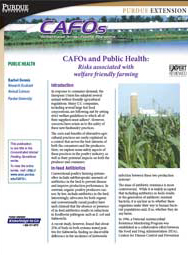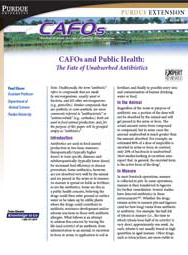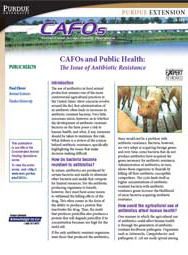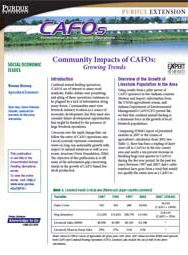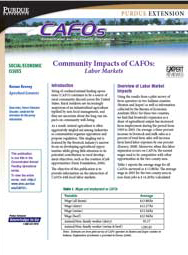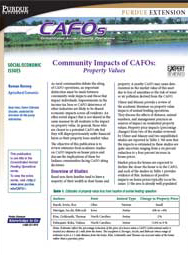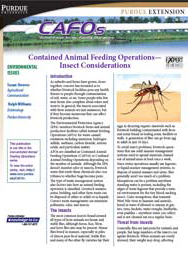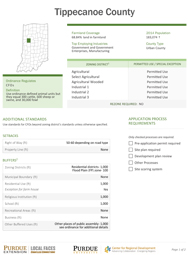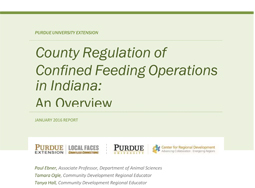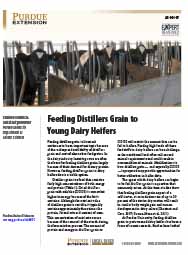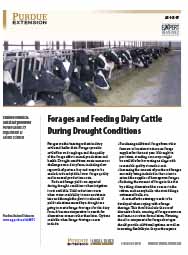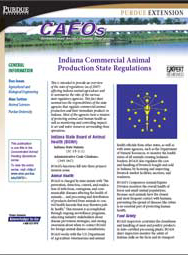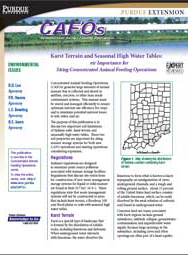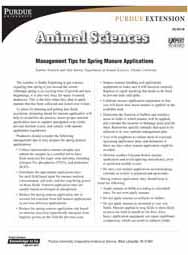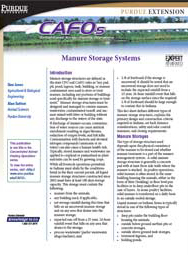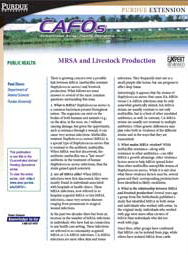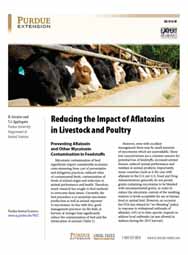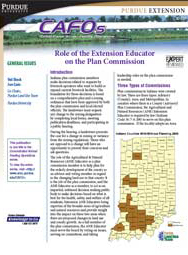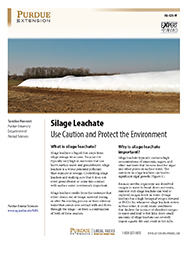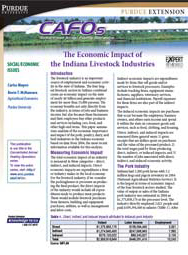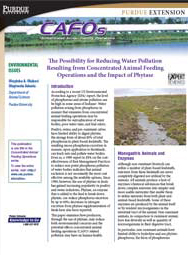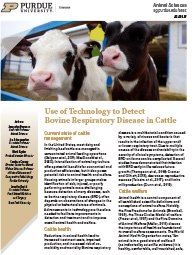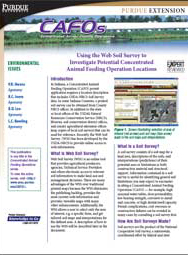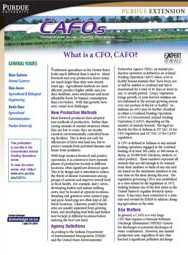Livestock
Confined Feeding Operations
This publication addresses poultry health and productivity issues connected to exposing flocks to aflatoxin-contaminated feed. ...
The use of antimicrobials (substances that kill or inhibit microorganisms) in food animal production is one of the more controversial agricultural practices in the United States. The author of this 4-page PDF publication...
Behavioral challenges and welfare consequences of cage-free poultry housing
Pecking, piling and other behavioral issues are challenges gaining attention as the laying hen industry shifts toward cage-free housing systems. In this publication, Purdue University researchers discuss the factors that...
CAFOs and Public Health: The Fate of Unabsorbed Antibiotics
This publication traces the life and activity of an antibiotic from administration to an animal, to excretion in feces or urine, to application to soil as fertilizer, and finally to possible entry into and contamination ...
County Regulations of Confined Feeding Operations in Indiana: County Fact Sheets
In May 2015, the State of Indiana commissioned Purdue Extension to study county zoning ordinances as they apply to confined feeding operations (CFOs). This January 2016 report includes fact sheets for all 92 Indiana coun...
County regulations of confined feeding operations in Indiana: An overview
In May 2015, the State of Indiana commissioned Purdue Extension to study county zoning ordinances as they apply to confined feeding operations (CFOs). This January 2016 report can help plan directors and plan commission ...
Feeding Distillers Grain to Young Dairy Heifers
Distillers grain is a popular livestock feed because of its availability and the cost of alternative feed grains. This publication looks at how best to incorporate distillers grain into the diets of post-weaned dairy hei...
Forages and Feeding Dairy Cattle During Drought Conditions
Drought conditions create numerous challenges on a dairy farm, including slow regrowth of pasture, hay and crops to be ensiled, reduced yields, lower forage quality and increased production costs. This publication looks ...
Management Tips for Spring Manure Applications
As plans for planting and getting into fields accelerate in spring, preparing ahead for manure application will help to streamline the process, insure proper nutrient application rates to support anticipated crop yields,...
There is growing concern over a possible link between MRSA (methicillin resistant Staphylococcus aureus) and livestock production. This publication answers several of the most common questions surrounding this issue. ...
Nutrient Management for Livestock Operations
This two–page PDF emphasizes that manure from livestock operations can be a valuable resource. It describes how livestock producers can handle and apply manure to cropland to get the benefit of the nutrients it con...
Reducing the Impact of Aflatoxins in Livestock and Poultry
This publication outlines the problem of aflatoxin contamination of animal feed and provides management practices that can lower the risk of contamination. ...
Silage Leachate: Use Caution and Protect the Environment
This 2-page PDF describes silage leachate, why it's important, and how you can deal with it. Silage leachate is liquid that seeps from silage storage structures. Because it is typically very high in nutrients that can ha...
Solar Heating Systems for Confinement Livestock Buildings
This publication is designed to help the livestock producer evaluate the potential of solar heating for a particular situation. It also discusses the major factors affecting the use of solar energy and the two types of s...
Use of Technology to Detect Bovine Respiratory Disease in Cattle
Bovine respiratory disease is an economically costly and important animal welfare concern for cattle. In this publication, Purdue researchers examine the role of technology in BRD detection, including the pros and cons o...









